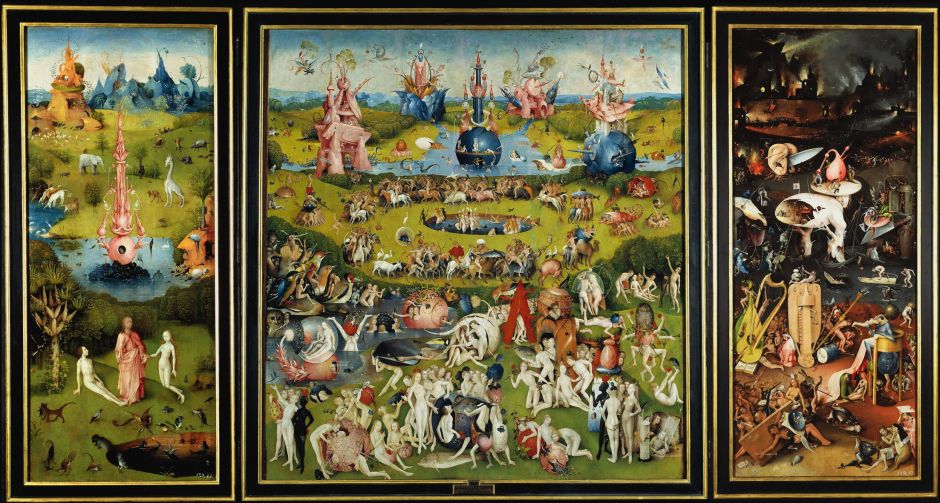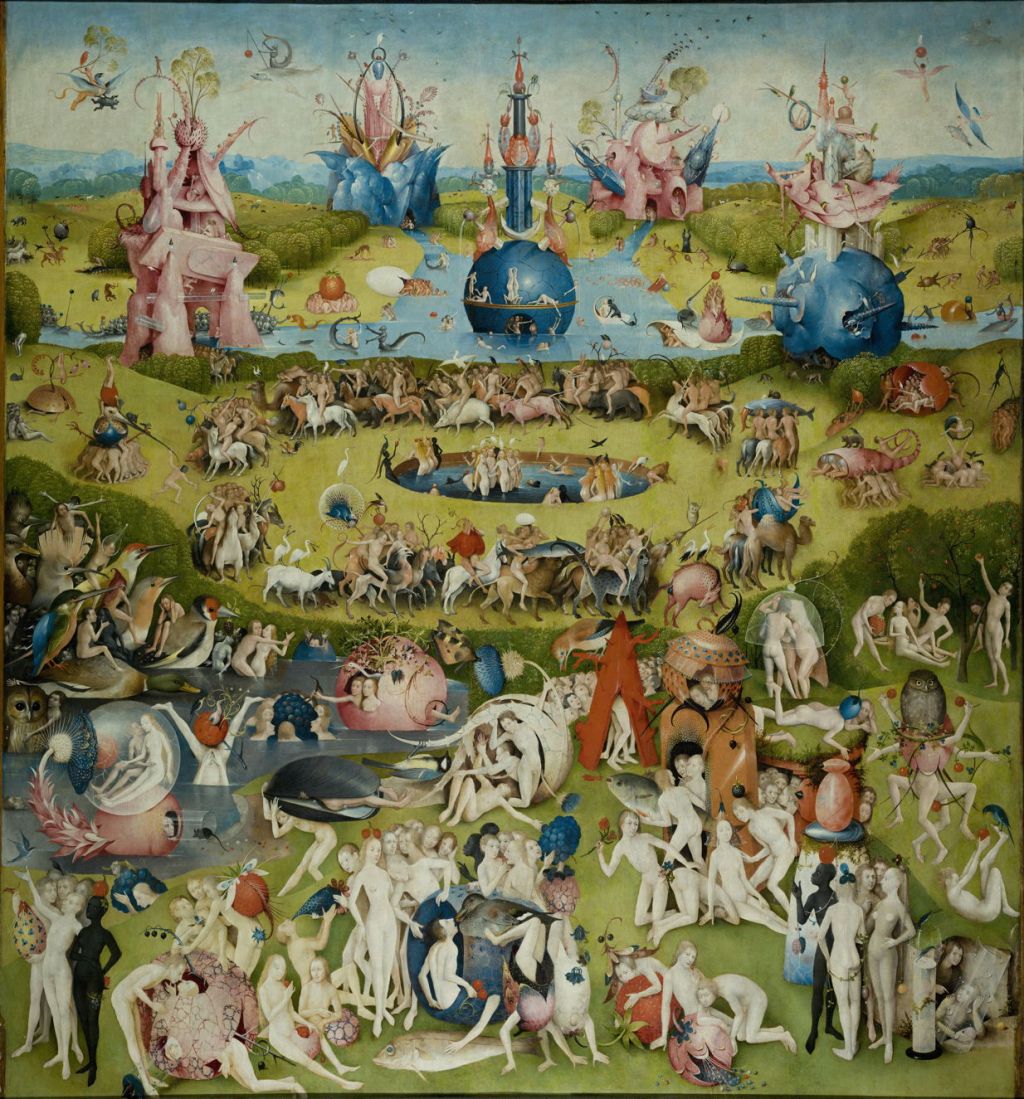Every painting is unique, but this one is among the most unique works of art ever produced in Europe. It’s also one of the most densely narrative paintings, featuring dozens, maybe hundreds, of curious stories. It’s Hieronymus Bosch’s extraordinary triptych The Garden of Earthly Delights, which he is thought to have painted between about 1495-1505.
It’s Bosch’s most documented painting too, first recorded only a year after his death, and described by a succession of viewers ever since. Although its commissioning isn’t recorded, it appears to have been painted as a conversation piece for the well-educated nobility, specifically Count Henry III of Nassau-Breda (1483-1538), in what is now Belgium. With a reputation among Spanish nobility as being loud and barbarian, Henry had some strange tastes. He apparently had a vast bed, onto which his guests were placed if they got suitably drunk, so that he could act as voyeur over what they then got up to.
Ilsink and others consider that Bosch’s main inspiration and source for the material in this painting was Hartmann Schedel’s extensively illustrated Weltchronik (history of the world) published in Nuremberg in 1493, which uses the same Biblical quotation as appears on the exterior of this painting.
Opening the triptych’s restrained and modest cover reveals a heady rush of bright colours, greens, reds, and blues, and a seething mass of detail.


The left panel shows an innovative view of the Garden of Eden, which is divided into tiers as it recedes into the background. The foreground is dominated by a scene from the account of the creation of man in Genesis, in which God has just created Eve, and introduces Eve to Adam. Adam is seated on the ground on the right hand of God. God holds Eve, on his left, by the right wrist. She appears to be kneeling on the grass on which they are stood. God wears red robes, Adam and Eve are of course naked.

The right panel is a complete contrast to the other two, in showing a nighttime scene full of suffering, violence, and destruction. It is segregated into three tiers by prevailing colour, and is thought to show Armageddon, the obliteration of God’s enemies during the end of the world.

Between those, the centre panel shows a rolling deer park with lakes, which is overrun by a dense mass of naked men and women, and bizarre objects.

The foreground contains a dense group of people who are frolicking on grass with large fruit objects, including strawberries, blackcurrants, blackberries, apples, cherries, and others. Behind that on the left is a small lake, again densely packed with people and extremely large birds, including a kingfisher. At the time, fruit were a real luxury, and still appear in the English phrase forbidden fruit, which perhaps describes most aptly the theme of this panel.


The middle distance is dominated by a central circular pond, in which there are more groups of people. Around them is a procession of people riding horses, camels, and other mammals, in an anticlockwise direction around the central pond. To the left and right are more groups of people interacting, apparently in playful ways, with bizarre objects, such as the tail of a massive lobster.

Further into the distance is a larger lake, fed by two rivers leading off into the central distance, and one at each side of the panel. Five fantastic tower structures are by or on the river. The central deep blue tower is based on a sphere, in and on which people are active. The other four towers alternate red and blue in colour, and feature various strange superstructures and ornaments. The two in the far distance, towards the top of the panel, are built over the river.
Far beyond is rolling, wooded countryside. The skies above are blue, cloudless, and contain several bizarre flying contraptions.
The three panels together form the overarching story, from the Garden of Eden and the creation of woman, through the earthly delight in the middle, to the end of the world.
Within each of those, but most particularly the centre panel, are innumerable little stories, of couples romping inside bubbles, indulging in forbidden fruit, carrying a large fish, and riding strange beasts around in a cavalcade. Their earthly delights prompt the viewer to flesh out each story in conversation. What are they up to? Is it innocent or depraved, sinful or moral? The viewer could return to the painting day after day, each time considering just a small passage of Bosch’s multiplicity of visual stories.
References
Falkenburg R (2011) The Land of Unlikeness: Hieronymus Bosch, The Garden of Earthly Delights, WBOOKS. ISBN 978 9 040 07767 8.
Fischer S (2013, 2016) Hieronymus Bosch, The Complete Works, Bibliotheca Universalis, Taschen. ISBN 978 3 8365 3850 3.
Matthijs Ilsink, Jos Koldeweij et al. (2016) pp 356-379 in Hieronymus Bosch, Painter and Draughtsman: Catalogue Raisonné, Yale UP and Mercatorfonds. ISBN 978 0 300 22014 8.
Schwartz G (2016) Jheronimus Bosch, The Road to Heaven and Hell, Overlook Duckworth. ISBNB 978 1 4683 1373 4.

